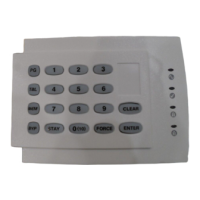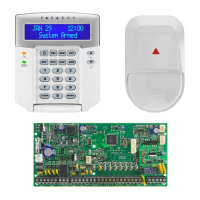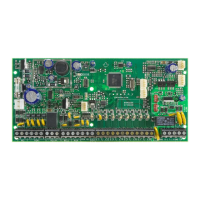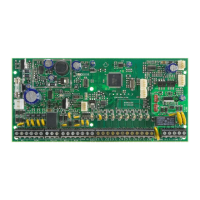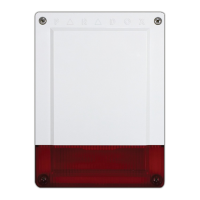Do you have a question about the Paradox Spectra 1686V and is the answer not in the manual?
| Brand | Paradox |
|---|---|
| Model | Spectra 1686V |
| Category | Security System |
| Language | English |
Details the Confirmation Beep and Rejection Beep tones used by the keypad for user feedback.
Explains the meaning of each colored indicator light on the keypad.
Describes how numerical buttons indicate the status of system zones (open/closed).
Explains how to view zones that triggered an alarm and when the memory is cleared.
Details how the system monitors trouble conditions and how the [TBL] button indicates them.
Lists and explains common trouble conditions like battery, power, and connection failures.
Lists and explains communication, timer, wiring, and telephone line trouble conditions.
Covers fire zone, module loss, transmitter supervision, and keypad fault troubles.
Explains the system's ability to divide the alarm into two distinct areas, Partition 1 and Partition 2.
Explains the System Master Code's functions and default value.
Describes Master Codes 1 and 2 and their assignments to partitions.
Explains the Duress Code for silent alerts during forced entry.
Provides guidelines for creating 4 or 6-digit access codes and security recommendations.
Step-by-step guide on programming new access codes into the system.
Instructions on how to remove existing access codes from the system.
Explains the delay period after arming, allowing users to exit the premises.
Details the process of disarming the system or stopping an active alarm.
Provides steps to disarm the system, including partition selection.
Describes the standard method for arming all zones in a selected partition.
Step-by-step instructions for performing a regular arming of the system.
Explains how to arm the system while allowing occupants to remain inside.
Provides steps to activate Stay Arming mode for partial system security.
Details how to enable Instant Arming after Stay Arming for immediate alarm response.
Explains how to arm the system quickly, ignoring open Force Zones.
Step-by-step guide to force arming the system, even with open zones.
Describes how to program specific zones to be ignored during the next arming cycle.
Instructions on selecting and programming zones to bypass.
Explains how to recall previously programmed bypass entries.
Allows arming the system without using an access code via button combinations.
How to perform regular arming using a single button press.
How to perform stay arming using a single button press.
Allows exiting armed premises while keeping the system armed.
How to perform force arming using a single button press.
How to access bypass programming mode using a single button press.
Explains using a keyswitch for system arming and disarming.
Details automatic system arming based on time or lack of movement.
How to program the system to automatically arm at a set time.
How the system can arm based on a lack of activity for a programmed duration.
How to enable audible alerts (chimes) for specific zones when opened.
How to enable or disable audible feedback from the keypad.
Explains how to trigger silent or audible alarms for emergencies.
How to set or update the system's internal clock.
Details the function of Programmable Output (PGM) buttons for controlling devices.
Lists special button combinations for quick system actions like reports or communication.
Provides steps to manage accidental activation of a Delayed Fire Zone.
Lists special button functions and panic alarm configurations.
Fields to record system timer settings like exit and entry delays.
Fields for installer, service, and monitoring contact details.
